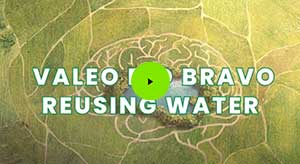Circular economy in the automotive industry
The transportation sector accounts for two-thirds of oil consumption and 13% of steel consumption. With the growth of electric mobility, it is expected to account for 80% of battery consumption in the future. This makes optimizing resource consumption a crucial challenge for the mobility industry at a time when environmental awareness is increasing.
The transportation sector represent
of oil consumption
of steel consumption
What is a circular car?
The circular economy is a powerful driver for reducing consumption while maintaining the value of assembled finished products for as long as possible. Valeo integrates the circular economy right from the product design phase, as well as in its ongoing activities and throughout its value chain. This ambitious strategy is supported by programs to reduce water consumption and waste in the Group’s operations.
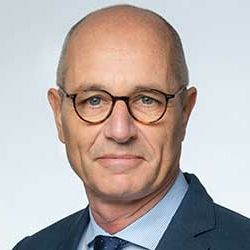
“Deploying the circular economy is one of the key ways to reduce our resource consumption at Valeo. And we’re going for it”
In 2023, the Group has launched the 4R program: ROBUST DESIGN, REPAIR, REMANUFACTURING, RECLYCLE(D). This program aims to bring a change of mindset in design, operations and business.
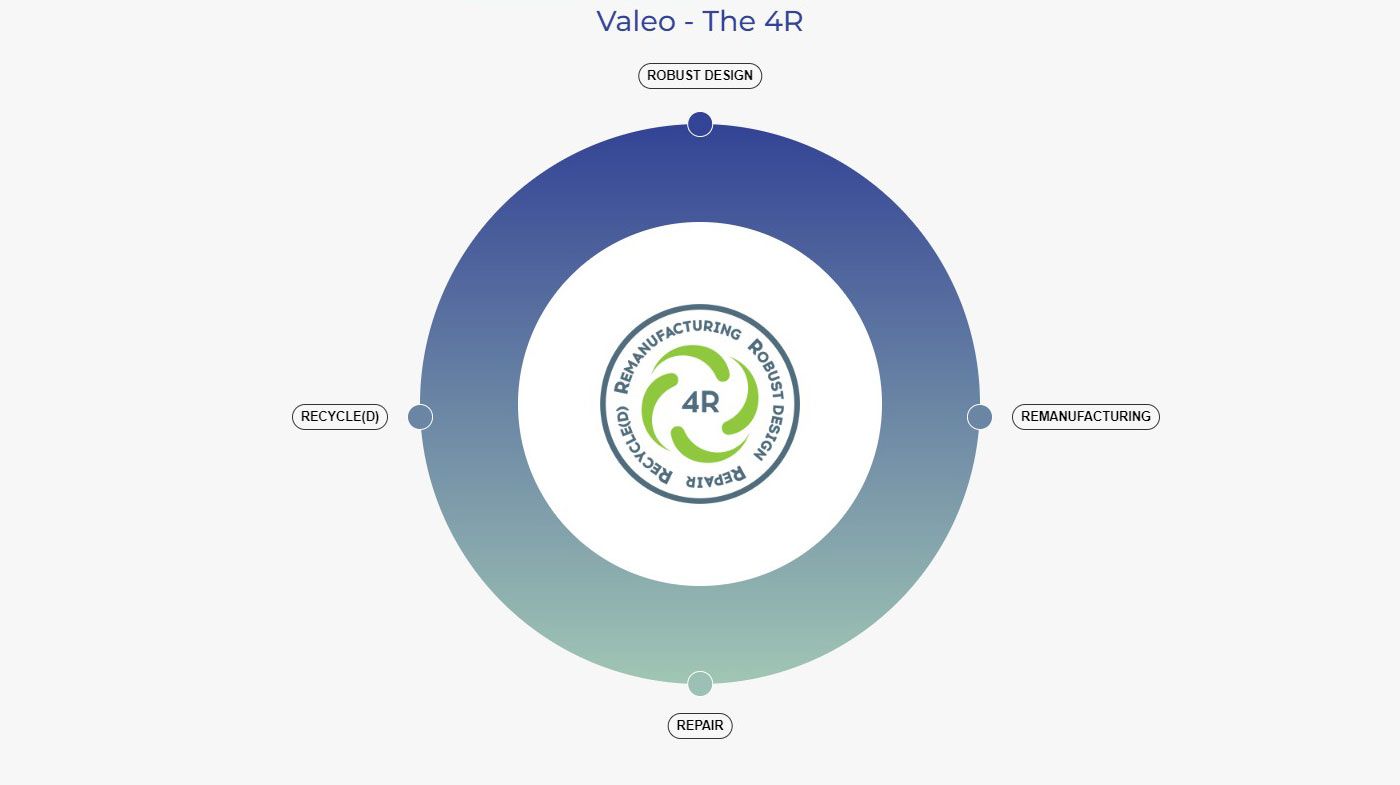
The circular economy from the design phase
Circularity is a key consideration right from the design phase: 80% of a product’s environmental impact is determined during this phase. Product designers must therefore ensure that the product can be disassembled, in order for it to be repaired or remanufactured, or for its materials to be recycled. Based on the design for disassembly approach, design teams factor these objectives into their technological decisions from the earliest project stages in order to optimize the disassembly process.
An example of circular design at Valeo
In 2022, Valeo launched an innovative wiper blade with the dual objective of limiting the product’s environmental impact without sacrificing performance, embodying the principles of the circular economy in the automotive industry.
And it was a success: Canopy uses more environmentally friendly rubber, made from over 80% natural, renewable or recycled materials. The eco-friendly wiper blade’s metal structure is also made from recycled materials (up to 15% recycled steel) , as are the wiper blade caps (up to 50% recycled plastic).
Valeo is also reducing adapter waste for repairers and end-users, with an adapter pre-mounted on a single flat blade, promoting sustainability in car maintenance.
Canopy’s fully recyclable packaging is made from over 90% recycled cardboard and printed with solvent-free, water-based inks.
natural materials
recycled steel
recycled plastic
recycled cardboard
Preserving natural resources in the vehicle manufacturing sector
In addition to its program to protect water in the vehicle manufacturing sector, which is essential to all life on Earth, Valeo is committed to better management of all the planet’s resources. This also applies to waste at Group level, which is treated as a resource that must be managed through targeted actions across all sites.
of sites certified to ISO 14001 (Environmental Management) standard
Risks related to environmental eco-efficiency are closely linked to natural resource preservation: Risk associated with accidental water and/or soil pollution, Risk related to water management, Risk related to atmospheric discharges and emissions, Risk related to transportation and logistics.
The results of the non-financial risk analysis are published each year in the universal registration document and can be consulted here.
A focus on the atmospheric discharges and emissions risk assessment process is available here.
Water protection program: reducing consumption and controlling effluents
Martos site - Spain
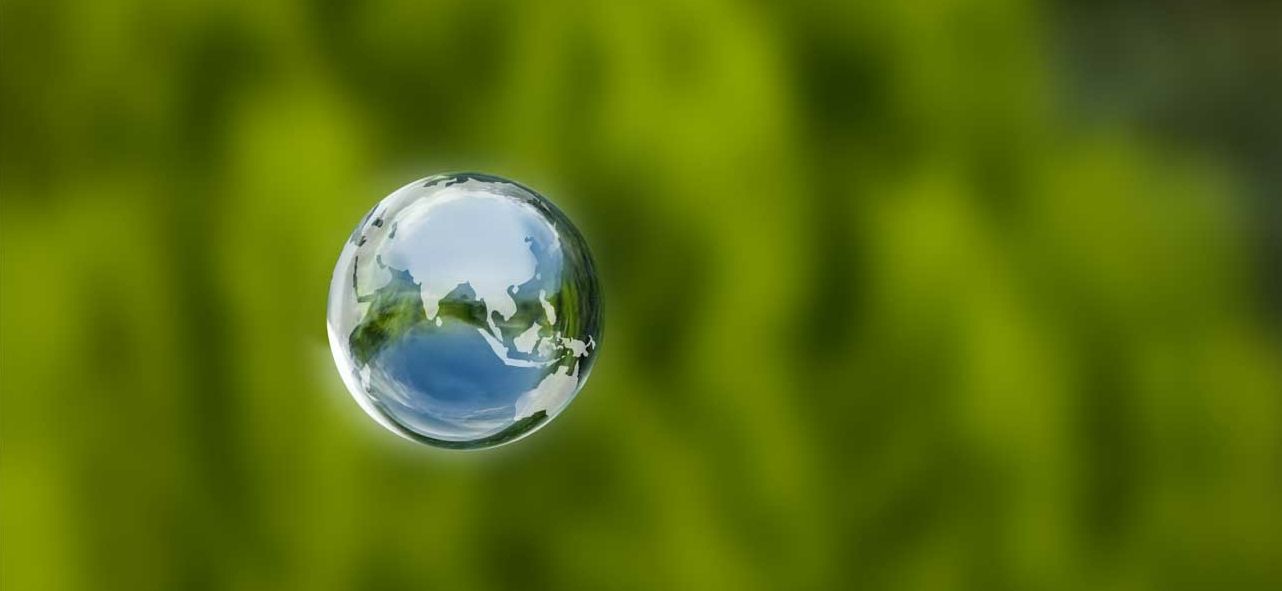
As a result of climate change, population growth and industrialization, demand for water is increasing, with more and more regions exposed to water stress and even water shortages. Valeo will never compete with local populations for access to drinking water. On the contrary, the Group is committed to developing positive initiatives to minimize its consumption of drinking water and improve the quality of its effluents.
In 2022, Valeo announced that it had reduced its water consumption by almost 6% in absolute terms compared to 2019, despite an increase in its production activity.
Reinforced measures and monitoring are in place at sites exposed to the risk of water stress in order to significantly reduce their needs and the local impact on water resources.
Ceasing groundwater withdrawal in industrial operations. This measure serves both to reduce water consumption and protect groundwater from accidental industrial pollution.
Some examples of key initiatives
Removing and replacing water cooling towers, as at the Foshan site (China). Replacing a wet cooling tower with a dry or adiabatic tower can save between 720 cu.m and 2,000 cu.m of water each year, depending on the technology.
Large-scale collection of rainwater and condensation from air-conditioning circuits. At Rio Bravo (Mexico), this process provides 60% of the site's water requirements after filtration. Over the course of a year, 14 million liters of water are collected.
Installing a new wastewater treatment system. At the Chennai site (India), this facility is now used to recycle 80% of domestic wastewater, reducing daily consumption by 45%.
Treatment of water contaminated by emulsions or oils. At the Humpolec site (Czech Republic), a filtration, evaporation and reverse osmosis process has been set up, with no additional chemicals. This means that the filtered water can be reused once the pollutants have been removed.
At the Ichikoh subsidiary's sites in Japan, water consumption has been significantly reduced thanks to a combination of initiatives: the discontinuation of thermoset lines, piping upgrades and condensate recovery.
Automotive waste management program
Valeo’s waste management strategy has two main goals: putting a stop to landfilling and identifying waste recovery solutions in the automotive industry.
Resource scarcity and pressure on raw material supplies are leading the automotive industry to rethink the way it uses waste. No longer just something to get rid of, waste is now a resource to be harnessed.
Valeo’s waste management program contributes to the circular economy in vehicle manufacturing and is based on two pillars:
- reducing the consumption of raw materials. Targeted actions are set up based on the consumption volumes for different materials (plastics, metals, production process consumables, etc.);
- recovering unavoidable waste. Unavoidable waste products are dismantled and sorted for reuse or recycling, either internally or through other channels.
The Valeo Seymour (United States) site has developed a rework process to disassemble headlamps in order to recover sub-components such as PCBAs and drivers. Instead of being discarded, these parts are reused. In the first six months of 2022, 58 metric tons of landfill waste was avoided.
At the 2023 SPE Innovation Awards in November 2022, Valeo’s Seymour (USA) site won the “Reserve Champion” prize in the sustainability category for its Silverado MCM recycled BMC bracket. .
The component is made with plastic materials recycled in a closed loop, with the acrylic from used products fully reincorporated into the manufacturing of new parts. In addition, parts that are usually not considered recyclable are pulverized into very fine particles to be used as a filler replacement – a first in the automotive industry.
Other Valeo sites are looking into adapting this process.
New sustainable initiatives are being rolled out each year to improve waste management at Valeo’s sites. Best practices are shared across the Group, enabling innovative actions to be rapidly disseminated so that they can be taken up by other sites. Once a quarter, the industrial, HSE, non-production purchasing and R&D teams hold an event to showcase the best practices implemented at various sites.
Initiatives to optimize recovery of used products
Committed to the circular economy, where possible the Group opts to repair and remanufacture assembled products rather than recycle them. In these processes, more value is retained than when products are stripped back to their raw materials. In addition, less processing – and therefore less energy – is required than for recycling. While recycling can be a key step in the product lifecycle and in the circular economy, Valeo has decided to step up development of its remanufacturing and repair activities, in order to give products a second life while retaining as much of their value as possible.
Remanufacturing and repair: Valeo’s circular approach
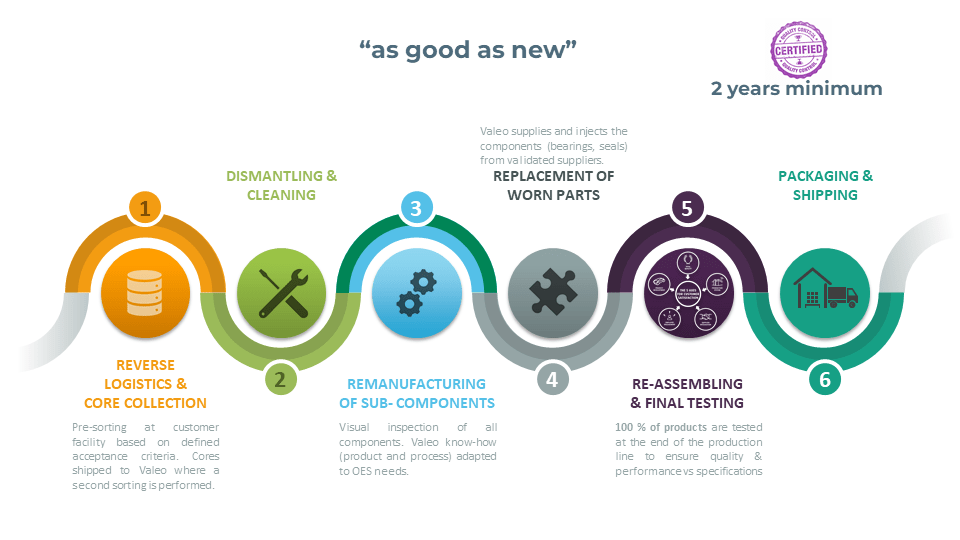
For over 40 years, Valeo has placed its expertise in the design and manufacture of original equipment at the service of the remanufacturing process, enabling it to offer a high-quality range of environmentally friendly products. This initiative is a key approach to create circular cars and contribute to the circular economy in the automotive industry.
After collecting and identifying used vehicle parts from all brands, Valeo teams disassemble, inspect, clean and test them, before launching the remanufacturing process. All remanufactured automotive products are tested to the same standards as original equipment parts.
Today, Valeo uses this well-established industrial process to offer a full range of remanufactured parts and its portfolio is set to grow significantly over the coming decade.
- A solid traditional portfolio: alternators, starters, clutches and air-conditioning compressors for passenger vehicles and trucks.
parts remanufactured every year.
- A growing portfolio of electronic products (REMAN 2.0): from high-voltage electric motors, inverters, electric compressors and front cameras, to displays and headlamps, Valeo is extending its remanufacturing activities to a range of core products in the field of electrification and the development of connected and autonomous vehicles. With the launch of remanufactured front cameras in 2023, Valeo is walking the talk.
- Products beyond the car: vehicle diversification is key to the future of road mobility. Valeo already produces a wide range of equipment for all types of vehicle, and is leveraging its innovations by applying them to other sectors. As demonstrated with the launch of its electric bike motors in 2023, Valeo’s remanufacturing activity now extends beyond cars.
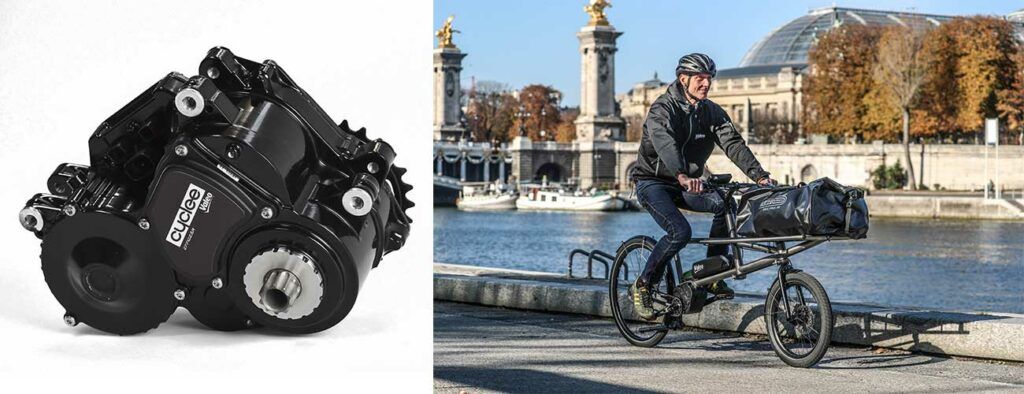
By extending its portfolio and developing this activity, Valeo aims to double its production of remanufactured parts to an average of two million parts per year by 2030.
In 2022, Valeo opened its first circular electronics laboratory at its Nevers (France) site. This cost-efficient, innovation-driven laboratory is built on the Group’s recognized expertise in electronics.
Electronics currently account for 55 million metric tons of waste per year worldwide. At the same time, electronic content per vehicle is constantly increasing. Valeo aims to use its laboratory to maximize value retention on these highly complex products, thereby avoiding the use of scarce resources and the significant amounts of energy required to process them for other uses.
of waste per year due to electronics
Example of Valeo’s remanufacturing operations: Remanufacturing at the Czechowice site
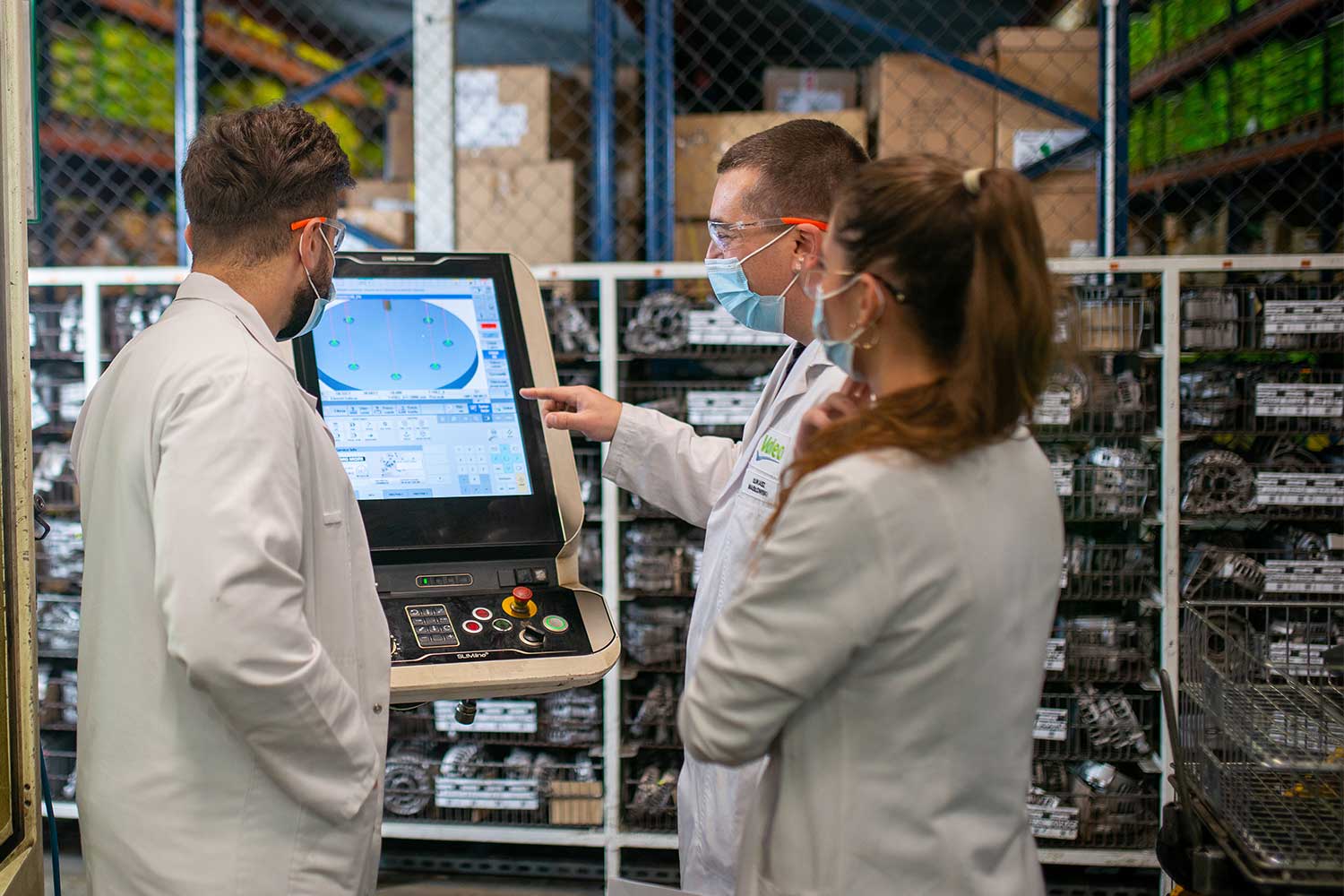
The multi-product remanufacturing site in Poland (5/8 products) is the leader in remanufactured original equipment spares such as starters, alternators and A/C compressors, as well as a pioneer in the remanufacturing of dual mass flywheel and dual wet clutches.
The Czechowice Reman Competence Center’s work process is based on a mother-daughter concept. It supports global remanufacturing process implementation and product development with its state-of-the-art tools, which include 3D printers. More than 100 remanufacturing engineers handle over 400,000 remanufactured parts per year.

